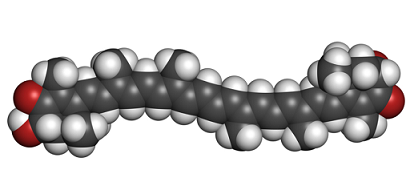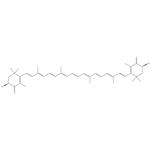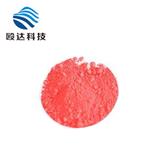Use of Astaxanthin
Aug 21,2019
Astaxanthin is one of the most sought-after antioxidant supplements right now – and with good reason. It’s not only an antioxidant powerhouse but also jam-packed with anti-fatigue and anti-inflammatory properties, as well as an array of other health benefits.Part of a group of micronutrients called carotenoids, astaxanthin has a characteristic reddish color. Early research has shown that astaxanthin can help speed up the treatment of complex ailments like Alzheimer’s Disease and Parkinson’s Disease.
That’s not all there’s to this powerful antioxidant. There are myriads of notable health benefits that come with consuming foods rich in astaxanthin.
In fact, the health effects of astaxanthin have been well documented in more than 1000 peer-reviewed medical publications and journals.

History of Carotenoids
Astaxanthin is one of the many well-known carotenoids.
Carotenoids are pigmented phytochemicals found aplenty in plants, bacteria, algae, and a plethora of other living organisms. They are one of the most diverse groups of natural pigments, which are responsible for the bright orange, red and yellow colors primarily in veggies, fruits, and many plant parts.
Carotenoids fall under the class of fat-soluble terpenes, compounds also known as a tetraterpenoid. They are among the earliest and the most investigated phytochemicals in the history of biology. In fact, their use cases and benefits have been studied at great length dating as far back as the 1800s.
Perhaps the most recognizable member of the group is carotene, which is often associated with carrots – and, by that token, vitamin A.
Not so surprising is that carotene was the first known carotenoid. Heinrich Wilhelm Ferdinand Wackenroder actually discovered it by accident in the late 1820s while investigating a different phytochemical called anthelmintic.
It was a famous Austrian chemist Adolf Lieben, however, who is credited for discovering carotenoids in the human tissue while conducting research in 1863 at the University of Palermo.
Today, there are over 1,100 documented carotenoid compounds. They can all be placed into two broad categories:
1) Xanthophylls – These are oxygen-containing carotenoids and usually have a yellow pigment. Astaxanthin, beta-cryptoxanthin, lutein, and zeaxanthin are good examples. Foods rich in xanthophylls include pumpkin, egg yolks, avocado, summer squash, spinach, and kale. They are often linked to eye health.
2) Carotenes – These are non-oxygenated carotenoids and typically linked to orange pigment. These include alpha (α) carotene, beta (β) carotene and lycopene. Foods rich in carotene include papaya, tomatoes, tangerines, sweet potatoes, cantaloupe and, of course, carrots.
What is Astaxanthin?
Astaxanthin is an increasingly popular carotenoid which belongs to the subclass of xanthophyll. It occurs naturally in certain algae and runs the color gamut from red to pink. Some astaxanthin can also be found in specific seafood types.
In fact, it is what causes the reddish color in lobster, salmon, fish eggs, trout, crabs, and other seafood. This substance is also what is responsible for the pinkish color in the features of flamingo.
In everyday and technical use, astaxanthin goes by many other names, including 3R,3’S-astaxanthin, 3R,3’R-astaxanthin, 3S,3’S-astaxanthin, 3,3′-dihydroxy-4,4′-diketo-beta-carotene, Dihydroxy-3,3′ dioxo-4,4′ bêta-carotène, Ovoester, Micro-Algue, Microalgue, Microalgae, Astaxantina or Astaxanthine.
Astaxanthin is often referred to as ‘the king of carotenoids’ because of its reputation as one of the most powerful antioxidants found in nature.
The substance is of particular significance because it never converts to become a pro-oxidant. This means that it can never bring destructive oxidation in the body, making it perfect for health-related benefits and performance.
That being said, astaxanthin as an antioxidant helps reduce oxidation, a natural that is responsible for the vast majority of inflammation cases in our bodies. If not reduced, prolonged inflammation can cause insurmountable damage to our health and well-being.
Specifically, inflammation is responsible for early aging, brain-related conditions like dementia, eye problems, heart disease, arthritis, and an array of cancers. By the virtue of being an effective antioxidant, astaxanthin can help with these conditions and a long list of other health complications
- Related articles
- Related Qustion
- Astaxanthin:Biological activities and benefits and Dangers Apr 12, 2024
Astaxanthin is a high value red pigment and antioxidant widely used in the pharmaceutical, cosmetic and food industries. Astaxanthin belongs to the carotenoid group of compounds.
- Astaxanthin: Biosynthesis, applications and production status May 23, 2023
Astaxanthin is one of the most sought-after antioxidant supplements right now – and with good reason. It’s not only an antioxidant powerhouse but also jam-packed with anti-fatigue and anti-inflammator
Benzoyl chloride is a useful acylating agent, preparation of ketones from organometallic compounds; It is mainly useful for the production of peroxides but is generally useful in other areas such as in the preparation of dyes, perfumes, pharmaceuticals, and resins.....
Aug 20,2019Organic ChemistryLuo han kuo fruit (Siraitia grosvenori Swingle), a fruit native to China, has been used as a natural sweetening agent for centuries and has been reported to be beneficial for diabetic population. However, limited research has been conducted to elucidate the relationship between the sweetening action and biological parameters that may be related to potential health benefits of LHK fruit (Luo Han Kuo fruit).....
Aug 21,2019Food AdditivesAstaxanthin
472-61-7You may like
- Potassium carbonate: a food additive
Apr 15, 2024
- Can Ammonium bicarbonate be used as a food additive?
Apr 9, 2024
- How to Melt Coconut Oil at Home?
Mar 21, 2024
- Astaxanthin
-

- $0.00 / 1kg
- 2024-04-19
- CAS:472-61-7
- Min. Order: 0.10000000149011612kg
- Purity: ≥99%
- Supply Ability: 20tons
- astaxanthin
-

- $270.00 / 1KG
- 2024-04-19
- CAS:472-61-7
- Min. Order: 1KG
- Purity: 1% 5% 10%
- Supply Ability: 1000kg/month
- Astaxanthin
-

- $0.00 / 1kg
- 2024-04-15
- CAS:472-61-7
- Min. Order: 1kg
- Purity: 99
- Supply Ability: 50000kg




